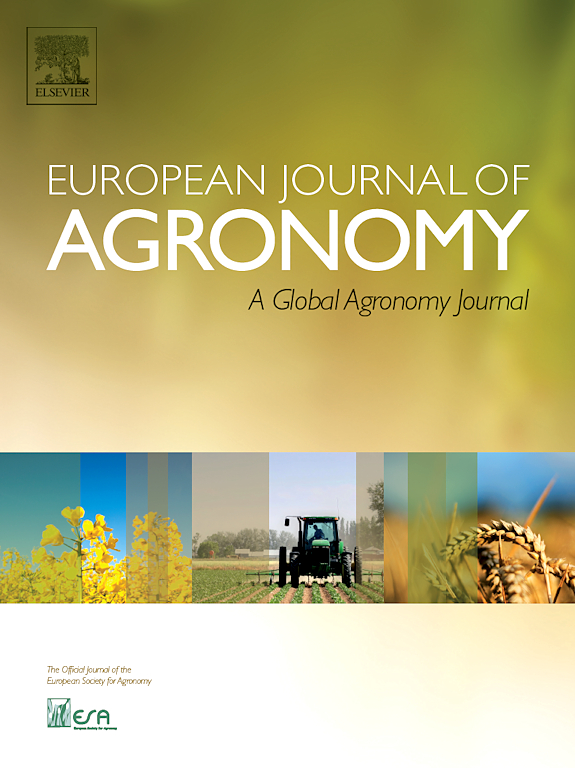Ver ítem
- xmlui.general.dspace_homeCentros Regionales y EEAsCentro Regional Buenos Aires SurEEA BalcarceArtículos científicosxmlui.ArtifactBrowser.ItemViewer.trail
- Inicio
- Centros Regionales y EEAs
- Centro Regional Buenos Aires Sur
- EEA Balcarce
- Artículos científicos
- Ver ítem
Variation in reproductive frost susceptibility of wheat cultivars is not associated with variation in glume and lemma thickness
Resumen
The thickness of wheat (Triticum aestivum L.) glumes and lemmas (TGL) influences their thermal insulation properties, which in turn, may influence reproductive frost susceptibility. The objectives of this study were to (i) determine the variability in TGL in bread wheat cultivars, (ii) quantify the frost susceptibility of cultivars with different TGL under field conditions and natural frosts, and (iii) find out, based on the estimation of the heat
[ver mas...]
The thickness of wheat (Triticum aestivum L.) glumes and lemmas (TGL) influences their thermal insulation properties, which in turn, may influence reproductive frost susceptibility. The objectives of this study were to (i) determine the variability in TGL in bread wheat cultivars, (ii) quantify the frost susceptibility of cultivars with different TGL under field conditions and natural frosts, and (iii) find out, based on the estimation of the heat transfer through the glume + lemma, if differences in frost susceptibility are associated with differences in TGL. TGL was evaluated in 11 long-cycle and 11 short-cycle cultivars and frost susceptibility in five cultivars with contrasting TGL was also determined. Additionally, the thermal properties of the glumes and lemmas were measured and the heat transfer through them was estimated. Significant and consistent differences in TGL were measured among cultivars. It was estimated that as TGL increased the inner side of the lemma would cool more slowly. However, differences in frost susceptibility of cultivars were not associated with variation in TGL. The research also showed that frost susceptibility does differ among Argentine cultivars. Further work is needed to confirm and understand the physiological basis of the variation in frost susceptibility of wheat.
[Cerrar]

Autor
Martino, Diana Laura;
Abbate, Pablo Eduardo;
Biddulph Ben, Thomas;
Pontaroli, Ana Clara;
Marcovich, Norma;
Fuente
European Journal of Agronomy 122 : 126185 (2021)
Fecha
2020-11-05
Editorial
Elsevier
ISSN
1161-0301
Formato
pdf
Tipo de documento
artículo
Palabras Claves
Derechos de acceso
Restringido
 Excepto donde se diga explicitamente, este item se publica bajo la siguiente descripción: Creative Commons Attribution-NonCommercial-ShareAlike 2.5 Unported (CC BY-NC-SA 2.5)
Excepto donde se diga explicitamente, este item se publica bajo la siguiente descripción: Creative Commons Attribution-NonCommercial-ShareAlike 2.5 Unported (CC BY-NC-SA 2.5)

